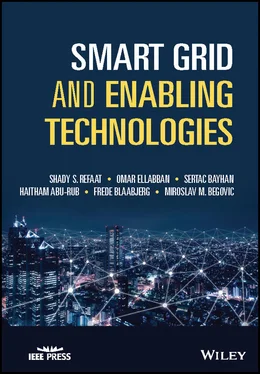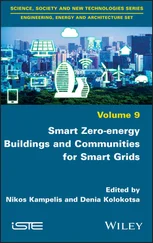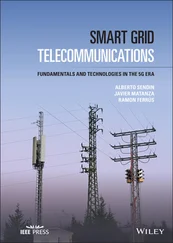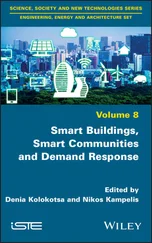Frede Blaabjerg - Smart Grid and Enabling Technologies
Здесь есть возможность читать онлайн «Frede Blaabjerg - Smart Grid and Enabling Technologies» — ознакомительный отрывок электронной книги совершенно бесплатно, а после прочтения отрывка купить полную версию. В некоторых случаях можно слушать аудио, скачать через торрент в формате fb2 и присутствует краткое содержание. Жанр: unrecognised, на английском языке. Описание произведения, (предисловие) а так же отзывы посетителей доступны на портале библиотеки ЛибКат.
- Название:Smart Grid and Enabling Technologies
- Автор:
- Жанр:
- Год:неизвестен
- ISBN:нет данных
- Рейтинг книги:3 / 5. Голосов: 1
-
Избранное:Добавить в избранное
- Отзывы:
-
Ваша оценка:
- 60
- 1
- 2
- 3
- 4
- 5
Smart Grid and Enabling Technologies: краткое содержание, описание и аннотация
Предлагаем к чтению аннотацию, описание, краткое содержание или предисловие (зависит от того, что написал сам автор книги «Smart Grid and Enabling Technologies»). Если вы не нашли необходимую информацию о книге — напишите в комментариях, мы постараемся отыскать её.
Smart Grid and Enabling Technologies
Smart Grid and Enabling Technologies
Smart Grid and Enabling Technologies — читать онлайн ознакомительный отрывок
Ниже представлен текст книги, разбитый по страницам. Система сохранения места последней прочитанной страницы, позволяет с удобством читать онлайн бесплатно книгу «Smart Grid and Enabling Technologies», без необходимости каждый раз заново искать на чём Вы остановились. Поставьте закладку, и сможете в любой момент перейти на страницу, на которой закончили чтение.
Интервал:
Закладка:
Producing electrical power from the wind needs the kinetic energy of wind to be transformed to mechanical and then electrical energy, the wind forces the turbine's rotor to turn, converting the kinetic energy to rotational energy by moving a shaft connected to an electric generator, thereby generating electrical power through electromagnetism, hence challenging the industry to create cost‐effective wind turbines and power plants to implement this transformation. Wind power increases with the area of the rotor and to the cube of the wind velocity. Theoretically, as the wind speed doubles, the wind power rises eight times. The output power depends on the swept area (related directly to the length of the blades) and the wind speed. During the past few decades, the size of wind turbines has increased constantly, from 0.05 MW in 1985 to 2.0 MW in 2014. The biggest commercially available turbines until now reach 8.0 MW each, with a rotor diameter of 164 m, as illustrated in Figure 2.20. Yet, a turbine merely traps a fraction of that available energy (40–50%), so wind turbine design has focused on increasing energy capture over the range of wind speeds experienced by wind turbines, while striving to decrease the cost of wind energy considering all other parameters. To decrease cost, wind turbine design is also motivated by a desire to decrease materials usage while striving to enlarge turbine size, improve component and system reliability, and to enhance wind power plant functions, [52–54].
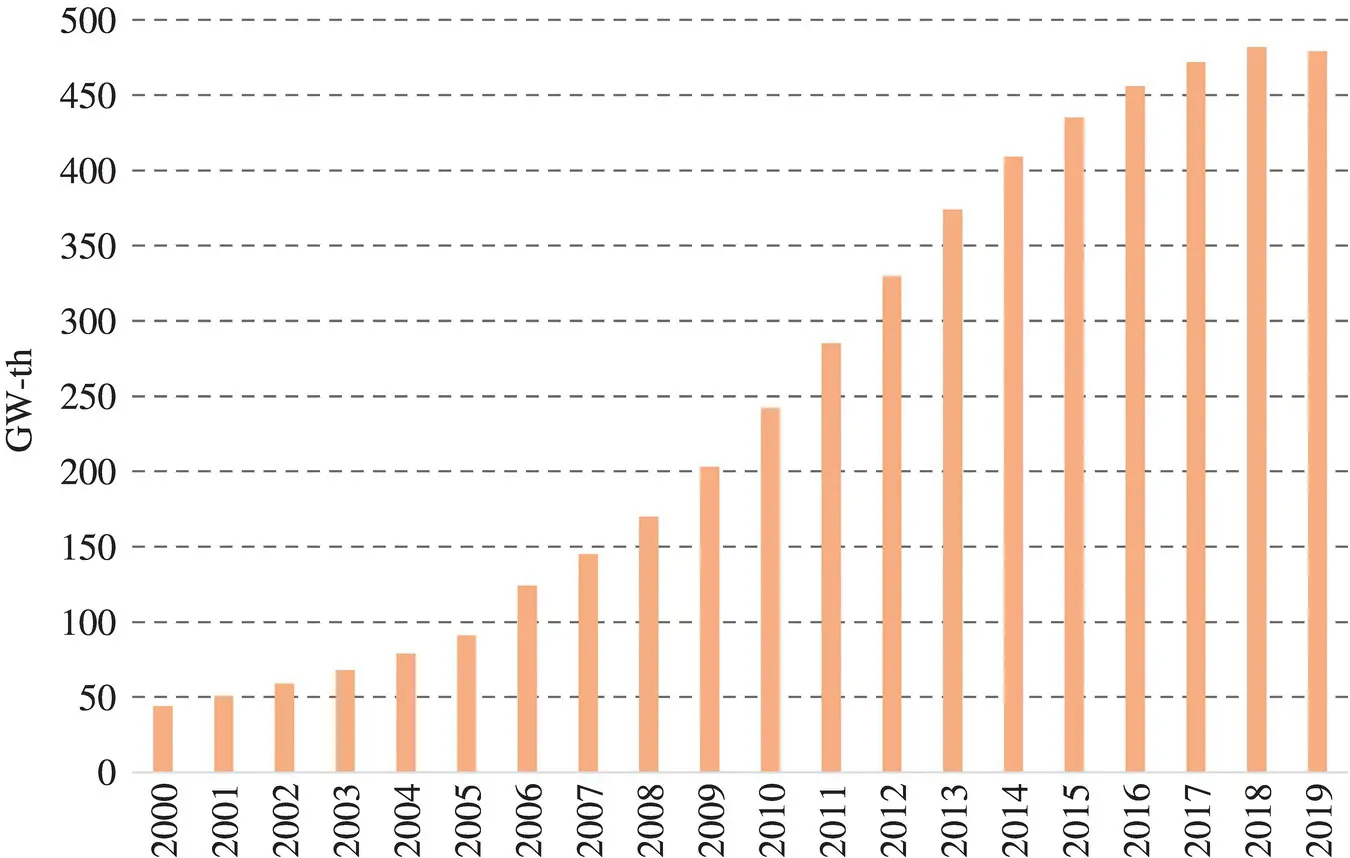
Figure 2.18 Solar water heating collectors’ global capacity, 2000–2019.
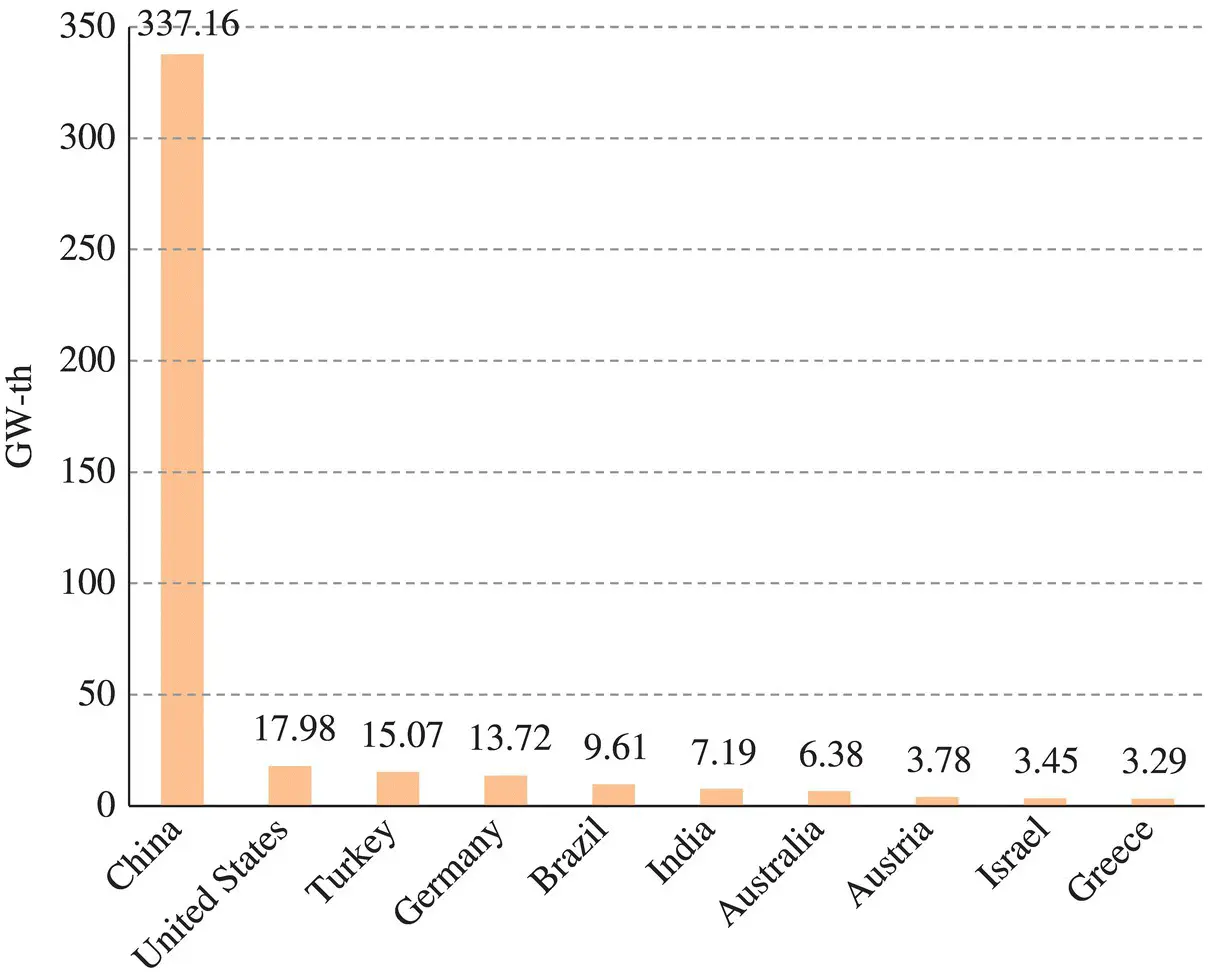
Figure 2.19 Solar water heating collector capacity by top 10 countries in 2016.
The three main components of the wind generation system are: (i) turbine which could be vertical or horizontal‐axis, (ii) installation area which could be onshore or offshore, and (iii) application which could be grid connected or stand‐alone. The majority of large wind turbines are up‐wind horizontal‐axis turbines with three blades. The majority of small wind turbines are horizontal‐axis. Developed structures of vertical‐axis turbines are presently utilized in many regions across the globe. They are associated with an aerodynamic energy loss ranging from 50 to 60% at the blade and rotor, a mechanical loss of 4% at the gear, and a 6% electromechanical loss at the generator. The full production efficiency typically ranges from 30% to 40% at wind energy facilities.
From 1970 to 1980, a number of onshore wind‐turbine configurations were examined, considering horizontal and vertical axis designs. The horizontal axis design came to dominate, although configurations changed, particularly the number of blades and blades orientation (upwind or downwind of the tower). Following consolidation, turbine designs centered around the three‐blade, upwind rotor; positioning the turbine blades upwind of the tower avoids the tower from blocking wind flow onto the blades, while three‐bladed machines usually have lower noise emissions than two‐bladed machines. Onshore wind turbines are usually grouped together into wind power plants, also known as wind farms. These wind power plants are usually 5–300 MW in size, although smaller and bigger plants are available. Offshore wind energy technology is less mature than onshore, and has higher investment, operation and maintenance costs. Benefits of implementing offshore wind energy entail: better quality of wind resources located at sea; potential to utilize even larger wind turbines; potential to construct bigger power plants than onshore; and the opportunity to decrease demand for land‐based transmission infrastructure [53].
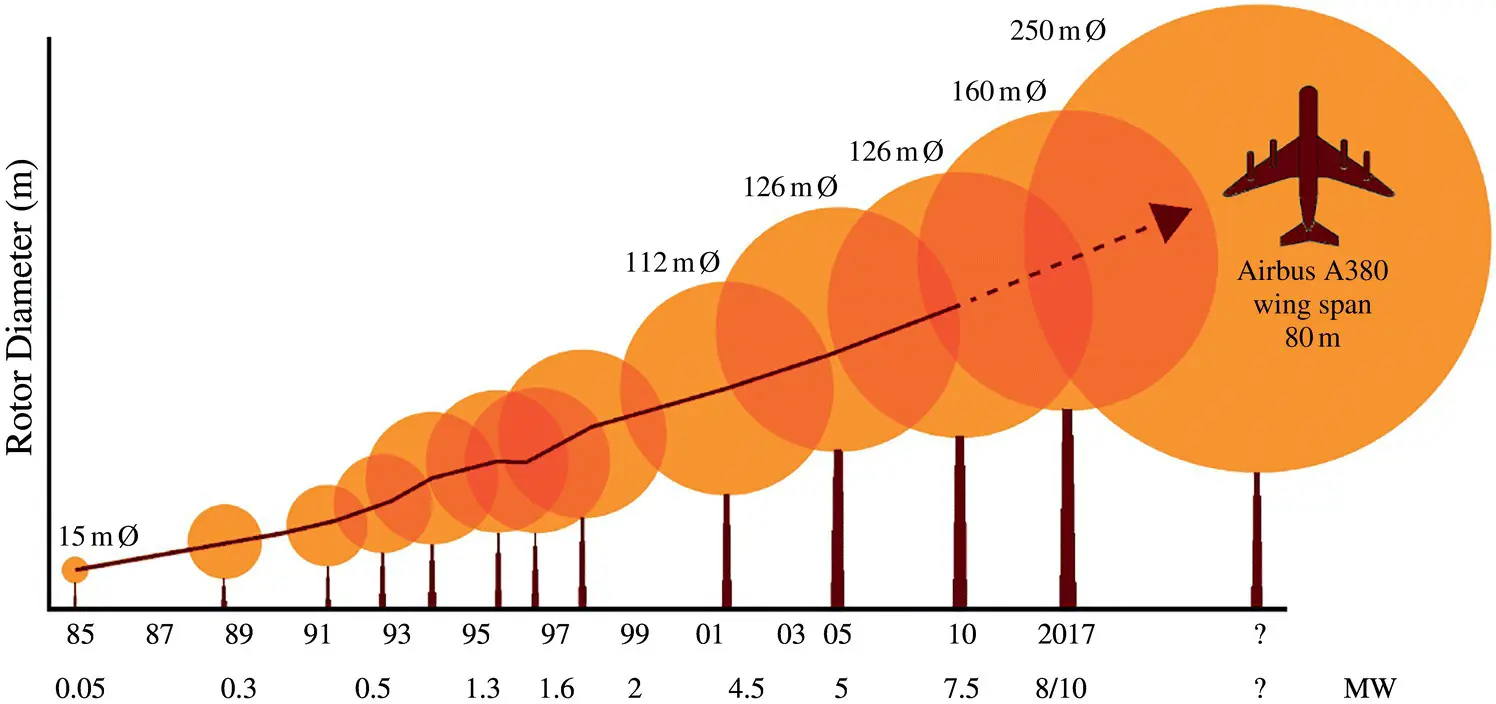
Figure 2.20 Growth in capacity and rotor diameter of wind turbines, 1985–2016 [52]. Reproduced with permission from IEA‐ETSAP.
With regard to the reliability of a power system, the power transformation system is of paramount importance when it comes to wind turbines. For large grid‐connected turbines, power transformation systems are categorized into three forms. Fixed‐speed induction generators are well‐known for their stall‐regulated and pitch‐controlled turbines; in these particular arrangements, wind turbines are net consumers of reactive power that must have been given by the power network. Advanced turbines replaced this with variable‐speed machines. Two arrangements are recognized world‐wide, doubly‐fed induction generators and synchronous generators with a full‐power electronic converter, and they come with pitch‐controlled rotors. These particular variable speed designs decouple the rotating masses of the turbine from the power system, thus, producing many power quality benefits as opposed to the old turbine configurations. These turbines could transmit real and reactive power, and some fault ride‐through capability, which are required by power network operators. To enhance production, development is now going directed toward bigger machines, which means greater dimensions of the blades, more hub heights and greater rotor dimensions. These modifications mean significantly increased capacity factors within given wind resource regimes, enabling more opportunities in both established and new markets [52, 54].
Another strong year for the global wind industry was 2019, with annual installations in excess of 60 GW, making globally installed wind power capacity 651 GW, representing cumulative market growth of more than 19% with gross additions 10% below the high record in 2018, as illustrated in Figure 2.21. China, the largest overall market for wind power since 2009, retained the top spot in 2016. Installations in Asia‐led global markets, with Europe ranked second, and North America closing the gap with Europe, in third place, as illustrated in Figure 2.22.
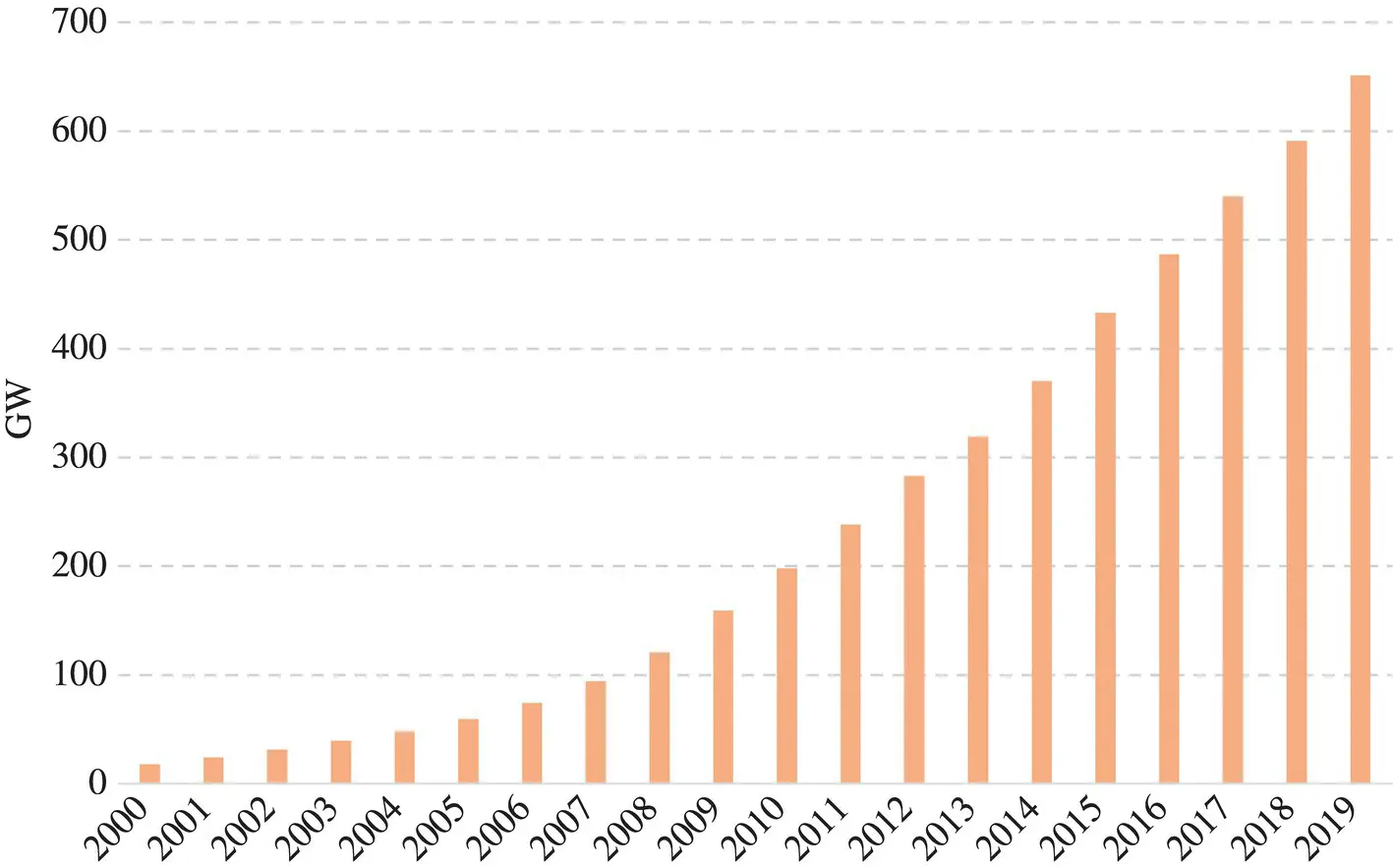
Figure 2.21 Total installed global wind power capacity, 2000–2019.
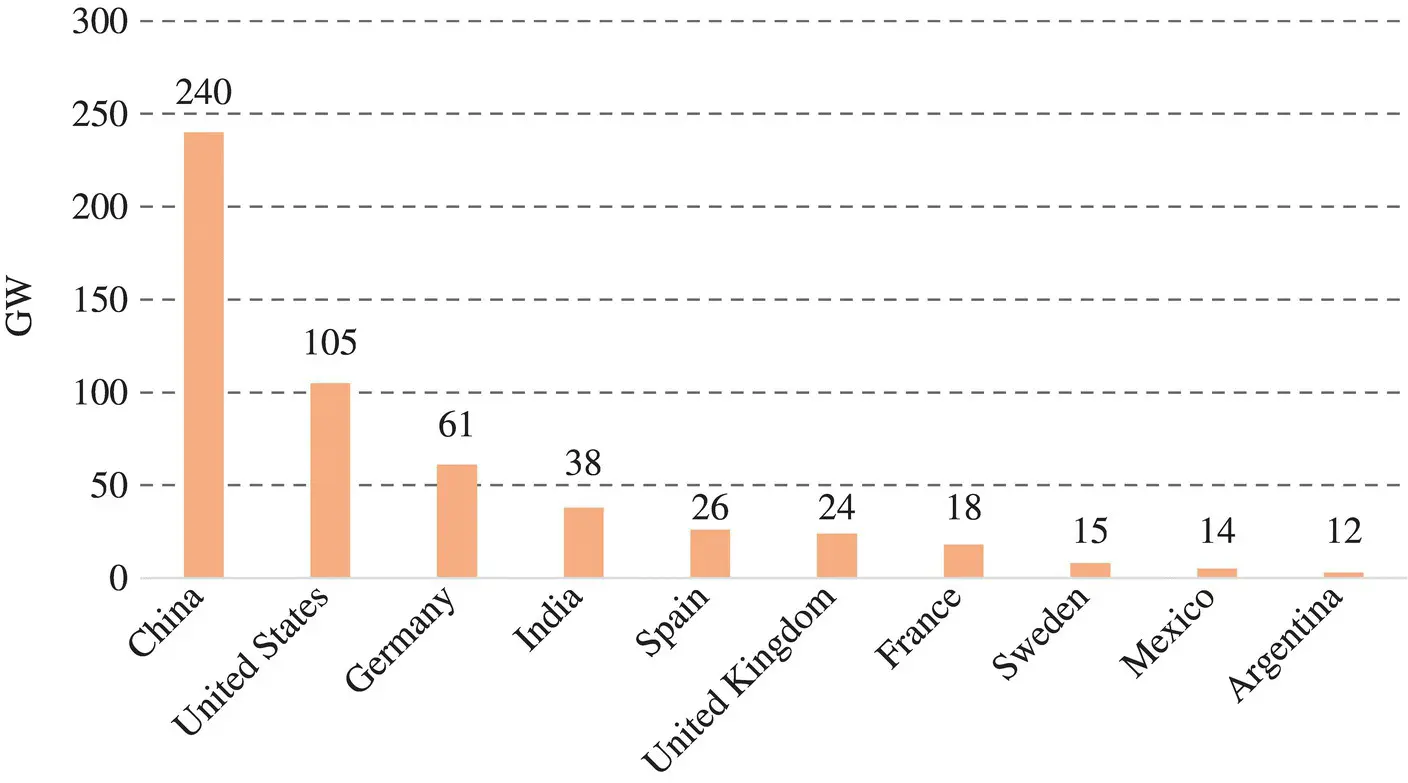
Figure 2.22 Installed wind power capacity, top 10 countries in 2019.
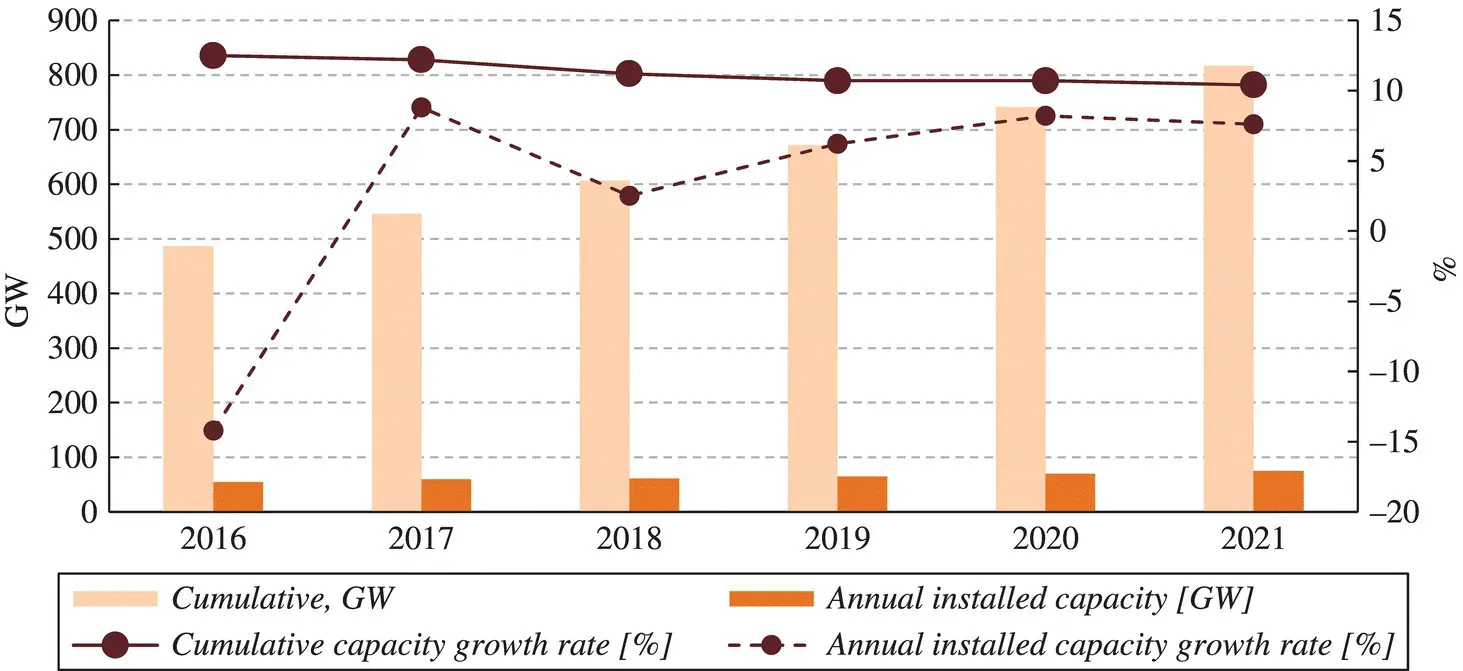
Figure 2.23 Wind power market forecast for 2017–2021. Ref [55]. Reproduced with permission from Global Wind Energy Council.
The Global Wind Energy Council (GWEC) believes that the wind power market will be going forward, as the technology is persistently becoming more advanced, prices continue to decrease and the demand for clean power and new industries becomes stronger with each passing year. The five‐year 2017–2021 market forecasting is illustrated in Figure 2.23[55].
2.3 Renewable Energy: Growth, Investment, Benefits and Deployment
RES integration is picking up ground. For the most part of renewable energy innovations, capacity and yield proceed to develop at a higher rate and their share in control division will be more than other routine advances, as outlined in Figure 2.23. Since 1990, RES has developed at a normal yearly rate of 2.2%. The development has been particularly tall for sun‐based photovoltaic and wind control, which developed at normal yearly rates of 46.2 and 24.3% separately. Sun‐oriented warmth developed with 11.7%, fluid biofuels developed with 10.4% and hydropower developed with 2.5% per year. Renewables worldwide add up to instated capacity and will proceed in its increment as shown by the 2040 projections in Figure 2.24. Renewables account for a rising share of the world's add up to power supply, the entire era from renewable assets increments by 2.9%/year, as the renewable share of world power era develops from 22% in 2012 to 29% in 2040, as outlined in Figure 2.25. Era from non‐hydropower renewables is the overwhelming source of the increment, rising by a norm of 5.7%/year, [56] Renewable energy can give a parcel of benefits to society, as outlined in Figure 2.26. In expansion to the lessening of carbon dioxide (CO 2) outflows, governments have ordered renewable vitality (RE) arrangements to meet a number of goals including creation of neighborhood natural and wellbeing benefits; assistance of vitality get to, especially for country regions; headway of vitality security objectives by broadening the portfolio of vitality advances and assets; and progressing social and financial improvement through potential work openings. The combined financial, natural, wellbeing and climate benefits give a solid case for approach intercession to quicken speculation in RE around the world. Expanding the share of renewables can influence the world's economy through speculation, exchange and power costs, The RES industry remains one of the foremost dynamics, fast‐changing, and transformative divisions of the worldwide economy. Technology advancements, cost drops, and the catalytic effect of new financing structures, have transformed the sector into a driver of economic growth globally.
Читать дальшеИнтервал:
Закладка:
Похожие книги на «Smart Grid and Enabling Technologies»
Представляем Вашему вниманию похожие книги на «Smart Grid and Enabling Technologies» списком для выбора. Мы отобрали схожую по названию и смыслу литературу в надежде предоставить читателям больше вариантов отыскать новые, интересные, ещё непрочитанные произведения.
Обсуждение, отзывы о книге «Smart Grid and Enabling Technologies» и просто собственные мнения читателей. Оставьте ваши комментарии, напишите, что Вы думаете о произведении, его смысле или главных героях. Укажите что конкретно понравилось, а что нет, и почему Вы так считаете.
